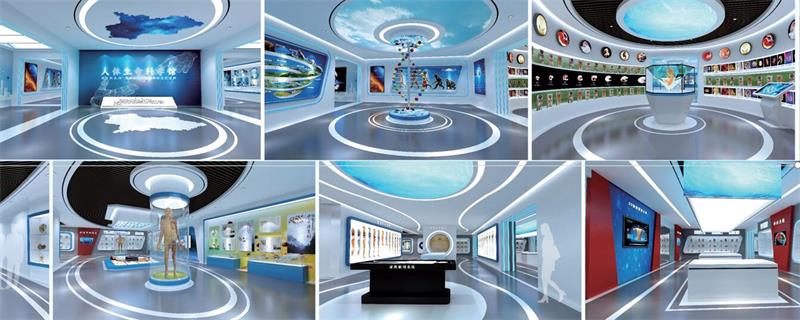
1. Strengthen student foundation
Human anatomy is a basic medical course that medical students first come into contact with after entering the school, and it is also a basic compulsory course for medical students. Anatomy is a science that studies the shape and structure of the human body and is highly practical. In the process of learning, it is necessary to combine theory with physical specimen observation, so students need to observe a large number of specimens to learn the shape and structure of the human body. Due to the complex content of anatomy, many medical terms, and limited study time of theoretical courses, many questions left in the classroom need to be answered in the experimental class. The establishment of the human life science Museum provides more help to teaching in the type, content and form of specimens. Human specimens displayed in the Human Life Science Museum include systematic anatomy, local anatomy, sectional anatomy, pathological anatomy, embryonic specimen, plasticized specimen and cast specimen. The specimen display in the Science Museum is intuitive, vivid, and equipped with text introduction and video animation. With the advanced VR human anatomy interactive system, the art of the human body is perfectly displayed, which improves the visualization, three-dimensional, concrete and interactive nature of the human morphology course.
2. Improve the teaching environment
Human anatomy is a very systematic and well-organized subject, and there is also a large number of medical terms to master. The newly enrolled medical students are relatively weak in basic knowledge and limited in spatial and abstract thinking ability. If we simply adopt conventional teaching such as theoretical teaching and follow-up experimental observation, it will affect students' learning interest and learning effect, and reduce the teaching quality of anatomy. The Life Science Museum is established on the basis of the integration of various disciplinary resources. It has both a training room equipped with digital VR, and an exhibition hall displaying a large number of taxonomic and local specimens, cast specimens, sculpted specimens, bioplasticized specimens, sectional specimens and abnormal specimens. The multimedia teaching equipment equipped in the training room can carry out anatomy course theory teaching and move the classroom into the training room. The specimen exhibition hall can carry out anatomy experiment course teaching, and move the laboratory into the showroom. Therefore, the Human Life Science Museum can be used as a bridge to combine the teaching of human anatomy theory and practical training, so as to realize the integration of theory and practice in the teaching of human anatomy, and the "teaching-learning-doing integration" can effectively improve the teaching effect and teaching quality, so as to improve the traditional teaching environment of anatomy.
3. Strengthen the foreign exchanges and publicity
The construction scale, specimen grade and technical level of the Human Body Life Science Museum reflect the specimen production level and comprehensive strength of a medical college. The Human Life Science Museum can serve as a window for external communication and publicity of the school. It not only serves the daily teaching of teachers and students, but also provides explanations of human health knowledge for non-medical students and social personnel, helps the public understand the structure and function of the human body, and enhances self-health awareness. The school science Museum can serve as a local education base for the popularization of life science knowledge, strengthen the school's external exchanges and publicity, and win more honors for the school.


